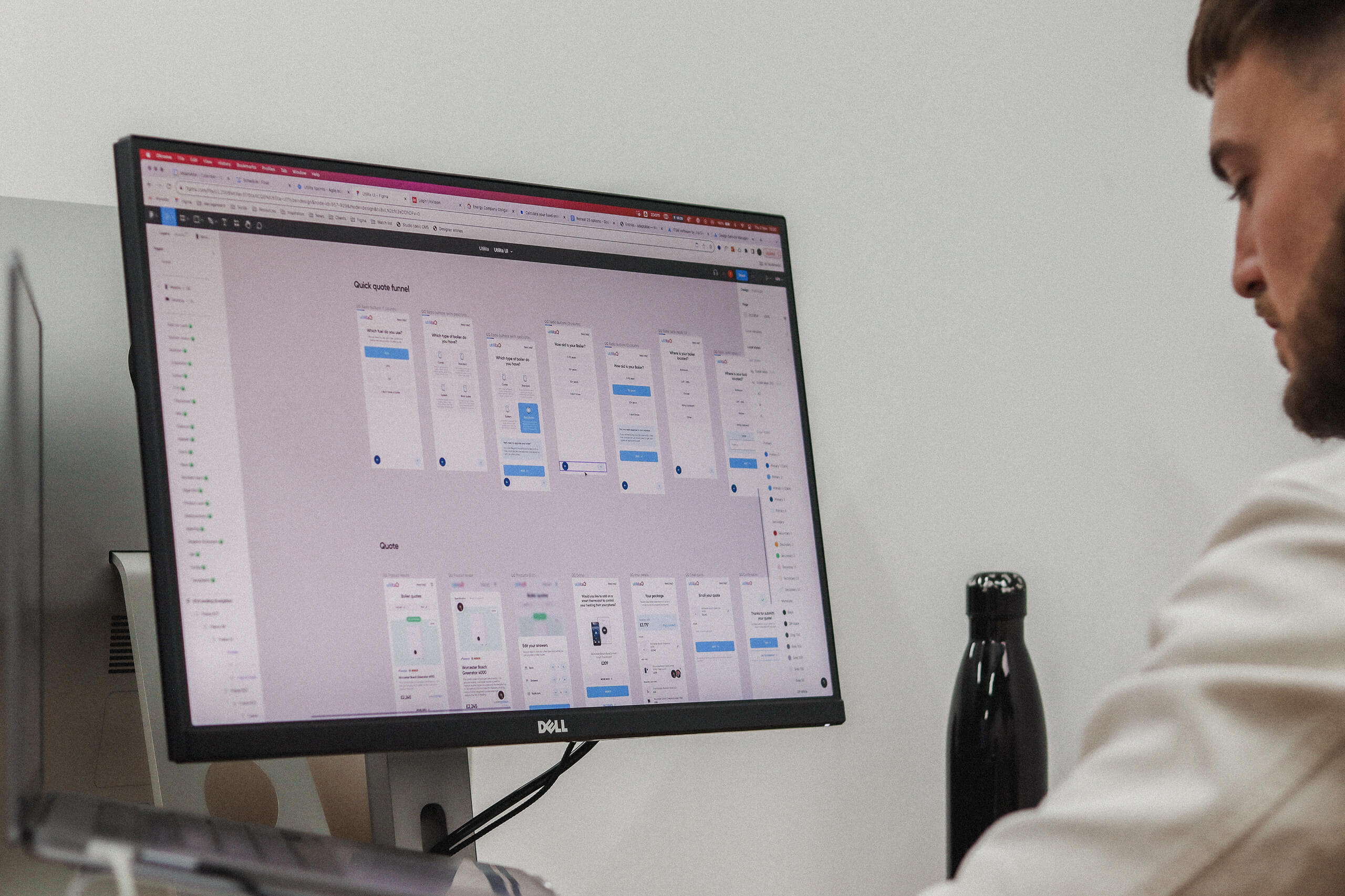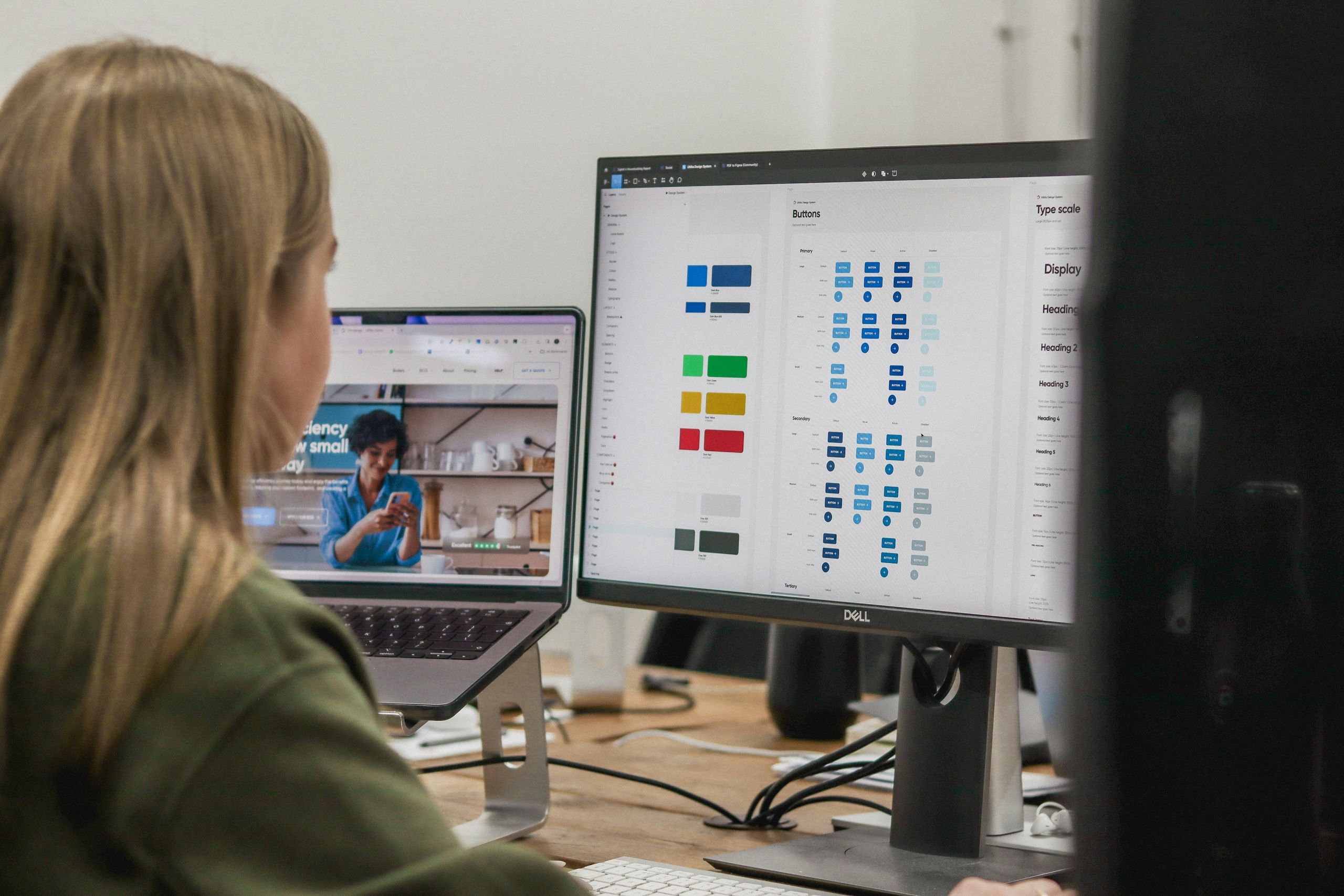Digital brand identity: why you need to get it right

“Branding” is quite a broad concept. A branding project can be anything ranging from a logo redesign to a full overhaul of messaging, values and positioning. At its core, your brand is the essence of you – whether in print, in digital, or in the minds of your customers.
As we build websites and digital products, we’re always concerned with one key aspect of branding: and that’s your digital brand identity. It may seem an obvious thing to state that your brand should be properly reflected and showcased in a digital space. But it’s amazing how many well-established businesses we come across (whose brands may not have been born in a digital-first world) are falling a little short of the mark.
With that in mind, we thought we’d dig into exactly what a “digital brand identity” is, and why it’s so important to get it spot on.
“Your brand is the promise you make with every interaction and the experiences you deliver that create trust and loyalty.”
– Unknown
What is digital brand identity?
Digital brand identity is the embodiment of your brand in the digital space, encompassing the experiences and interactions customers have with your website and/or digital products. As we’ve already set out, brand is all about the experiences and interactions people have with you, and fundamentally so is digital – therefore your digital presence and your brand go hand-in-hand. Your digital brand identity sets out all of the visual and interactive elements that represent your brand digitally. Ensuring that your digital identity consistently maintains the integrity of your overall brand is vital to building trust and loyalty with the customers.
More specifically, you might consider your digital brand to consist of some of the following visual elements:
- Logo – specifically thinking about it responsively, and a simplified version for mobile.
- Typography – ensuring fonts are web safe, suitably readable and accessible. Include web font files with valid licenses or free-to-uses alternatives such as Google Fonts.
- Colour palette – as well as your brand colours, consideration to further colour variations and a range of monotone colours that are generally needed across a design system.
- UI elements – button styles, icons, form inputs and finer details such as shadows and corner radius (rounded corners).
- Interactions – how does your brand “feel” in a digital space? This covers things like hovers, animations and transitions. What should these interactions evoke? Should they be playful? Create depth? Feel luxurious?
When a user is interacting with your website or digital product, all of these elements come together to communicate who you are and what you’re about. If the user gets a sub-par experience, that directly impacts your brand. It takes a person 0.05 seconds to form an opinion about your website, and for 94% of users that impression is based on visual design.

Your digital brand identity sets out elements such as colours, button styles and typography and how they’ll be used in various applications.
Why is your digital brand identity so important?
When it comes to why getting your digital branding right is so important, we can think about three key areas.
1. Clarity
Your digital brand identity should be clear – both in the abstract and literal sense of the word. First and foremost you need to ensure that your logo is clear and legible in different formats and on different screen sizes. You should ensure that your brand fonts and typography are legible, accessible and web-safe, and that your colour palette doesn’t impact legibility. Buttons and call-to-actions should be clear so that users know what you want them to do next. In the more abstract sense of the word, your digital brand should clearly reflect and represent your wider brand – so users have no doubt who you are and what you’re about. Colour alone pulls significant weight here – a signature colour can increase brand recognition by 80%.
2. Consistency
Consistent application of brand online is where a lot of organisations fall down. Having a clearly defined digital brand identity spanning your logo, typography, colour palette, imagery and other elements ensures that you’ll always have consistency wherever your brand is represented. This consistency builds trust and loyalty with your customers – as they’ll be able to instantly recognise that a piece of digital content or communication is from you. It’s also about creating an identity for your digital experience that’s a natural and cohesive extension of your overall visual style.
Beyond that, having a carefully considered digital brand identity in place will help you to ensure you have a consistent look and feel and behaviour across all digital products and platforms. To establish this consistency, digital studios will work with a design system, usually as an extension of or to run in tandem with your brand guidelines. A digital design system is a collection of reusable components, guidelines and tools that gives you everything you need to create consistent experiences across your platforms. This includes all of the visual elements we’ve already discussed, as well as other assets such as iconography, design patterns, and accessibility. Designs systems enable scalability, efficiency and improved collaboration for your internal teams when it comes to creating digital assets for your brand.
Creating visual consistency for Utilita Energy
Utilita Energy is a household name and widely recognised brand – so maintaining trust in their brand through visual consistency is of the utmost importance. After partnering with us on several projects to develop and launch digital products, we collectively identified the need to create a master design system. The Utilita Energy design system helps them maintain a consistent visual style across all of their digital ecosystem, as well as more quickly and efficiently launch new digital experiences.

The Utilita Energy design system documents key styles as well as elements like responsiveness and component variants.
3. Competitiveness
In the digital space, you’re not just up against who you consider to be your direct competitors. You’re up against millions, billions even, of other brands competing for a user’s attention. It’s vital that you consider how to stand out visually amongst these competitors. You can’t afford to blend in with the crowd – breaking through the noise with a digital visual identity that’s both striking and expertly applied is how you stand out.
Getting your digital brand identity right
Nailing your digital brand identity starts with good planning and preparation – as we’ve covered in this post, there are a lot of details and elements to get right, and you’ll want to make sure you have everything in place from the beginning of a digital project, so you can ensure everything’s as scalable and replicable as possible going forward.
Adaptable regularly supports our clients who are looking to develop a website or digital project with refreshing their visual identity for digital. However, If you’re engaging a branding agency, before embarking on a website or digital product, you’ll need to make sure you have all web usage covered as part of your brand design process and more importantly thoroughly documented in your guidelines. We can also help you ensure that any existing guidelines have all elements and web applications covered – suitable fonts, colour schemes, logo usage, etc.
If you’re embarking on a digital project and want to make sure your branding is up to scratch, get in touch.




